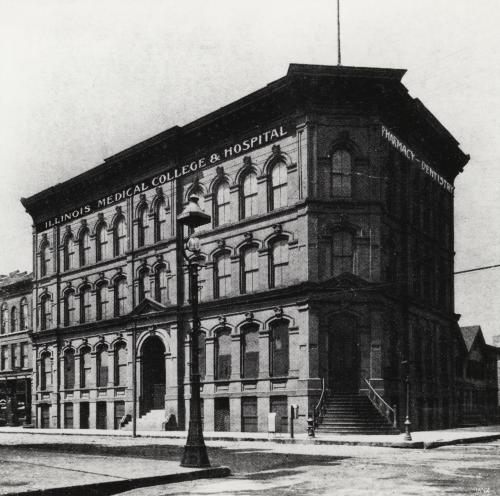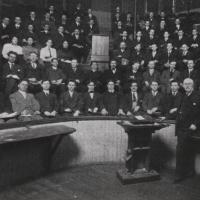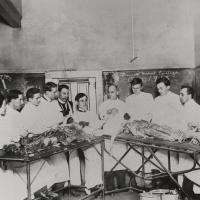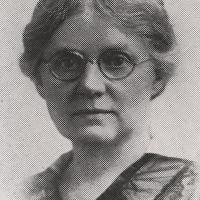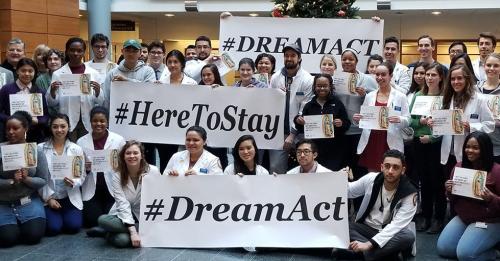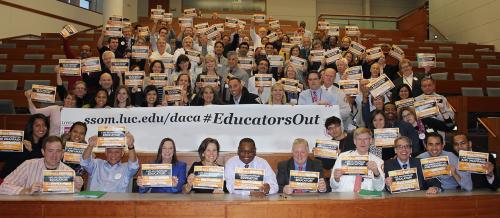In the Service of Others: Diversity in the School of Medicine, Then and Now
Then: 1910s
Building a medical school is no small feat, but Loyola University Chicago did not stop there. It also demonstrated a commitment to inclusion, diversity, and access to education from the very beginning.
In 1908, the newly re-chartered Loyola had no medical school or even a medical department. This changed in 1909, when Loyola University affiliated with the Illinois Medical College and formed the Medical Department of Loyola University. Loyola next affiliated with Bennett Medical College in 1910, following Bennett’s purchase of the associated Illinois Medical College and Reliant Medical College. Finally, in 1917, Loyola affiliated with the Chicago College of Medicine and Surgery. These affiliations served as the foundation for the Loyola School of Medicine, which opened as an accredited school in the fall of 1920.
Through the reorganization, the School of Medicine attracted and taught a diverse set of men and women who came from as far away as Mexico, Cuba, the Philippines, and Korea. Many received recognition from both their peers at Loyola and colleagues in the field. H.K. Rey, a graduate of the class of 1916 of the Bennett Medical School, served as president of the Korean Student’s Association in America from 1912-1913. Another student, 1917 graduate Ramón Berrios Berdecía of Puerto Rico, was elected by his peers as the “Prophet of the Class.”
In addition to enrolling female students, the Loyola School of Medicine and its affiliates employed women as instructors and professors. Dr. Edith B.L. Lambert, a 1907 graduate of Bennett Medical College, later served as a clinical assistant at Loyola. Dr. Francis Helen Cook, who graduated from Bennett Medical College in 1911 after its affiliation with Loyola, became an instructor in pediatrics with the Loyola School of Medicine. The School of Medicine hired its first chairwoman, Dr. Bertha Van Hoosen, in 1919. An obstetrician, Dr. Van Hoosen became the first woman to present at several professional conferences and was elected the first president of the Medical Woman’s National Association, now the American Medical Woman’s Association.
Now: 2010s
Loyola’s medical school continues to raise the bar of diversity in the medical school system in the twenty-first century. In June 2013, the Stritch School of Medicine (SSOM), renamed in honor of Samuel Cardinal Stritch, Archbishop of Chicago in 1948, announced its acceptance of Deferred Action for Childhood Arrivals (DACA) students. DACA provides undocumented immigrants who entered the United States before age sixteen an avenue to defer deportation and apply for work visas if they meet certain qualifications. Former President Barack Obama announced the program in a 2012 executive action modelled on the Development, Relief and Education of Alien Minors (Dream Act), which was first proposed in 2001 but failed to pass. In recognition of the bill, DACA recipients became known as “Dreamers.”
While SSOM fielded inquiries about accepting students under the proposed DREAM Act, it wasn’t until DACA passed that they had a real opportunity to do so, according to Dr. Linda Brubaker, the dean and chief diversity officer of SSOM. When DACA was created, it allowed for individuals to obtain work visas, which in turn enabled them to obtain Social Security numbers legally. This allowed students to complete their residencies, a crucial requirement of medical education.
Deciding to accept DACA recipients, however, was only the first step towards encouraging diversity.Dr. Mark Kuczewski, chair of the Medical Education department and founder of the DACA program at SSOM, worked to create a welcoming atmosphere for the DACA students. Dr. Kuczewski wanted to make sure DACA students knew that if they were at Stritch, they were qualified and deserving of their place there. SSOM felt that that accepting DACA students furthered the Jesuit mission of social justice.
Since DACA students could not obtain federal loans, SSOM and the Illinois state government worked together to make sure that state loans met their financial needs. In return, DACA students work in a hospital in an underserved area for four years in Illinois following the completion of their residency. SSOM expected to receive ten to twelve applications from DACA students, and in July 2014 seven students started classes. All seven graduated in May of 2018. Since this first class, SSOM has continued to develop its program, which now serves one of the largest concentrations of undocumented students in the nation. Nearly a third of DACA medical students attend Stritch.
Inspired by its Jesuit roots, the Stritch School of Medicine has shown itself to be at the forefront of diversity in the medical school system for more than a century of operation. Its commitment to expanding access to education reflects the mission of Loyola University Chicago.
« CampusesModern, Complete, and Efficient: Mundelein Center, Then and Now >>
